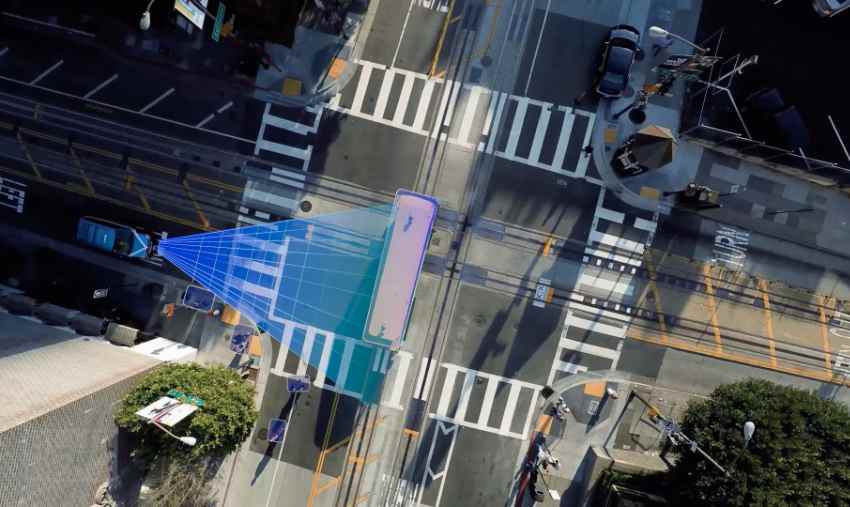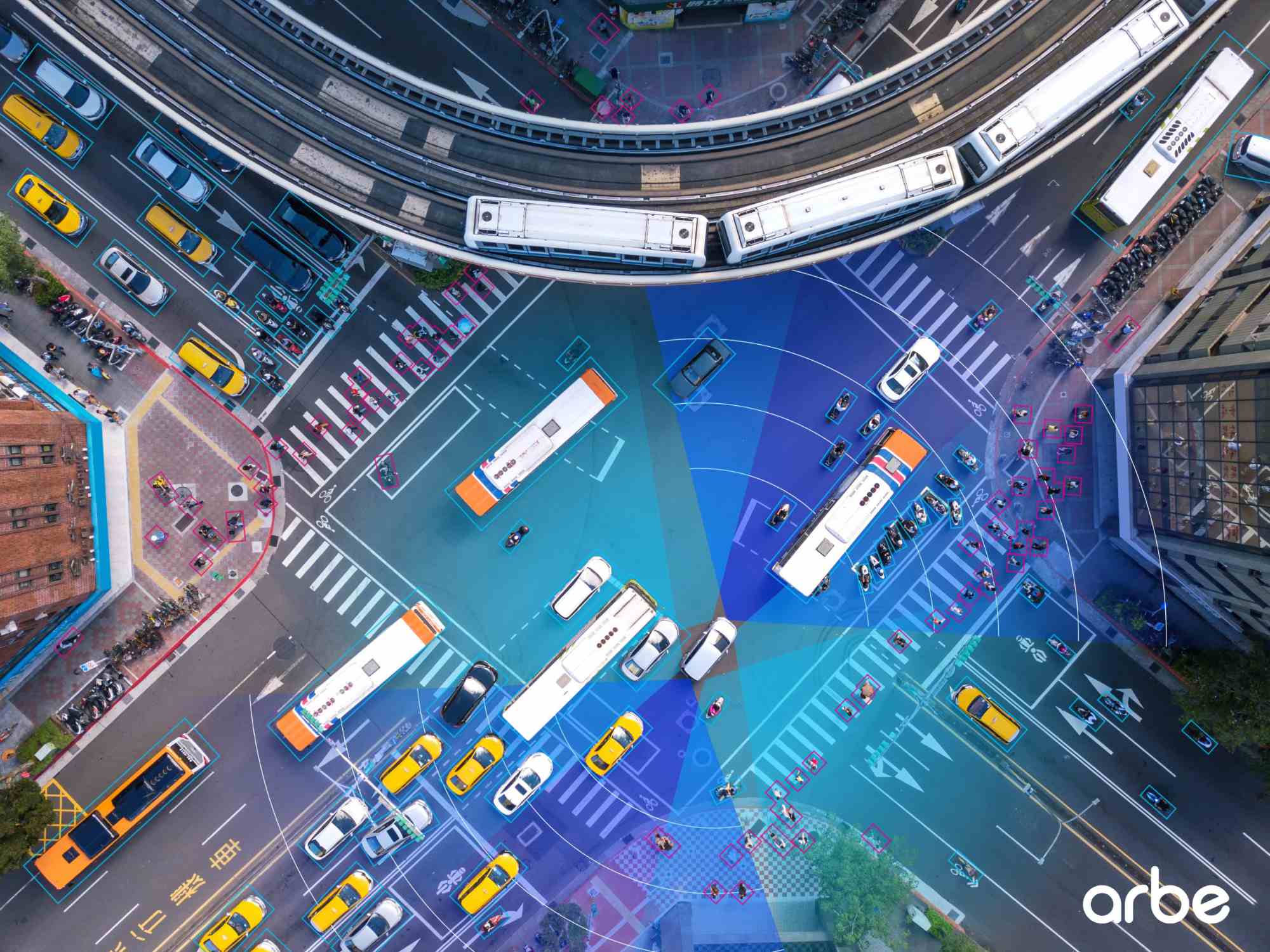Arbe’s ultra-high resolution Perception Radar is a key solution enabling true safety in the ADAS and AV market. Radar resolution is determined by the number of virtual channels, much like camera resolution is defined by pixels. Traditional automotive radars offer a channel array of around 16 channels, and even advanced radars reach approximately 200 channels. Arbe has made a ground-breaking leap, delivering a 2,304-channel array, 10 times more than leading alternatives, providing unparalleled resolution and performance. This innovation makes it possible, for the first time, to rely on radar as a key sensor for automotive perception. Arbe’s Perception Radar supports over 100,000 detections per frame, generating a point cloud two orders of magnitude denser than any other radar solution.
What are the main areas of activity of the company?
Arbe’s Perception Radar is critical for the evolution of the automotive industry. Specifically for L2+ and L3 use-cases, Arbe’s Perception Radar is imperative because:
- Its precision and reliability are essential for meeting the rigorous safety standards of NHTSA (U.S.) and NCAP (Europe).
- It addresses vital autonomous driving challenges by offering HD sensing in long-range which is critical for highway autopilot or hands-free, eyes off driving at full speed (not offered today).
Arbe’s Perception Radar operates effectively in all environmental conditions, from detecting pedestrians at night and overcoming glare and light saturation, to making crucial driving decisions in adverse weather like snow, fog, and heavy rain.
It’s an independent source for free space mapping for L3-L5 vehicles, since:
- Arbe’s Perception Radar is a trailblazing technology offering accurate free space mapping, enabling vehicles to distinguish drivable from non-drivable areas with precision.
- It can detect objects at long-range in azimuth and can separate objects accurately. Arbe’s perception radar is superior at stationary object detection, constant detection through partial and full occlusion, and road incline, “under-” and “over-drivability” identification.

Provides rich data with fusion with cameras, since:
- Arbe provides the first radar-based solution with sufficient detail required to support integration with camera sensor data for comprehensive environmental perception. A first-of-its-kind for radar, Arbe’s ultra-high-resolution radar imagery and dense point cloud achieve object tracking, boundary mapping, and classification to support critical safety and navigation applications. By fusing this data with camera input, Arbe’s Perception Radar transcends individual sensor limitations, ensuring consistent perception in all weather and lighting conditions.
- Arbe’s sensor fusion capabilities empower autonomous vehicles with unparalleled safety advancements, elevating decision-making capabilities beyond the reach of vision-only systems.
What’s the news about new products/services?
Some recent news that Arbe announced over the last two months includes that their product was named “Sensor Technology Solution of the Year” in the 2025 Autotech Breakthrough Awards program and won the Innovation Award in the 2025 Just Auto Excellence Awards. The company also appointed the former VP of Magna International and EVP of Veoneer Chris Van Dan Elzen, to the board of directors. Additionally, Arbe is seeing a demand for its solution beyond the automotive industry. Arbe’s tier-1 supplier, Sensrad, secured several orders, including a boat collision prevention solution, an initiative involving autonomous vehicles for off-road applications for a strategic US customer in the defense sector, a China-based Tianyi Transportation project, and several customer evaluations.
What are the ranges of products/services?
Arbe’s Perception Radar is designed based on a proprietary chipset that includes:
- A proprietary automotive-grade radar RF chipset – transmitter and receiver chips of 48 receiving and 48 transmitting channels that bring two orders of magnitude higher resolution than current leading radars for reliable detection of the vehicle’s surroundings. The chipset provides best-in-class performance for channel isolation, noise figure, and transmit power at the lowest cost per channel in the market.
- An industry-first high-definition Radar Processing Chip that allows the processing of massive amounts of raw data in real-time with unprecedented computational abilities (equivalent to 3Tb per second). The proprietary processor can scale from high resolution to ultra-high resolution and support the data generated from 2304 virtual channels (48*48), which is much higher than what has been achieved on a chip, in the automotive industry, while maintaining low power consumption.

What is the state of the market where you are currently active?
The state of the market is promising. Arbe has secured partnerships with leading Tier-1 suppliers, and global OEMs are actively using its radar data to develop AI perception algorithms, reinforcing industry demand for AI-powered radar solutions, including:
- Magna, HiRain, and Weifu leading automotive tier-1s, selected Arbe’s chipset solution for their next-generation radars.
- Sensrad, from Sweden, is developing radars based on Arbe chipset to non-automotive markets.
- One of the top ten OEMs worldwide has selected Arbe’s chipset for the development of its next-generation imaging radar aimed at serial production.
- Arbe is engaged in a collaboration with a prominent European truck manufacturer to integrate Arbe’s automotive grade imaging radar technology into the manufacturer’s next-generation sensor suite.
- China-based Tianyi Transportation Technology will implement 4D Imaging Radars powered by Arbe’s chipset to monitor traffic.
- Arbe collaborates with NVIDIA to enhance free space mapping and AI-driven capabilities.
- Sensrad is delivering its first radar series powered by Arbe’s chipset to customers in the defense sector for autonomous off-road vehicle applications and for an intelligent road infrastructure project.
- Sensrad received an order from WATCHIT for the Sensrad Hugin D1 Radar based on the Arbe chipset for their collision prevention system for recreational boats.
What can you tell us about market trends?
Vehicles are now heading into the next phase of evolution – Level 3 autonomy or “eyes off driving systems” – where the vehicle will take over most of the driving in certain scenarios, like the highway, enabling the “driver” to take their attention off of driving tasks unless prompted by the system.
For Level 3 autonomy to really be effective on the highway, it would need to be completely hands-free and eyes-off with the capacity to drive at 130km/h or 80 mph safely. This is crucial since the common speed on many interstate highways is 70-80mph, and the Autobahn in Germany has an average driving speed of 120-140 km/h in areas where there is no speed limit. Level 3 vehicles need to be able to drive on highways throughout the world at the normal speed expected on those roads and have the capacity to do so safely.
Consumers today are looking forward to these advanced features as their confidence in self-driving vehicles has increased over the years; however, automakers are stating that eyes-off driving at 130 km/h safely is currently a barrier to launching it. We think this focus on developing L3 vehicles and finding the right solutions to do so will be a market trend throughout the next year.

What are the most innovative products/services marketed?
Arbe harnessed the power of AI to optimize performance for advanced features such as multipath suppression to eliminate false alarms and elevate image reliability. Some other critical areas, where Arbe is leading the way by implementing AI to enhance performance, are:
- Object Tracking: The radar precisely determines an object’s location in relation to the vehicle, comprehending vital parameters such as speed, size, shape, altitude, orientation, and turn rate.
- Free Space Mapping: A critical feature lies in the radar’s ability to create a detailed map of free and occupied spaces.
- Path Planning: The AI-driven capabilities of the Perception Radar extend to path planning, relying on its ability to predict the future location of objects.
- Target List for Fusion: a detailed target list that includes spatial coordinates, object velocities, and a confidence parameter for each target.
- Classification: Utilizing advanced classification algorithms,AI is used to distinguish between various objects, identifying whether they are pedestrians, vehicles, two-wheelers, or larger vehicles such as trucks and buses.
- SLAM (Simultaneous Localization and Mapping): The radar not only detects obstacles but also performs Simultaneous Localization and Mapping, continuously generating and updating a map of the vehicle’s surroundings.


